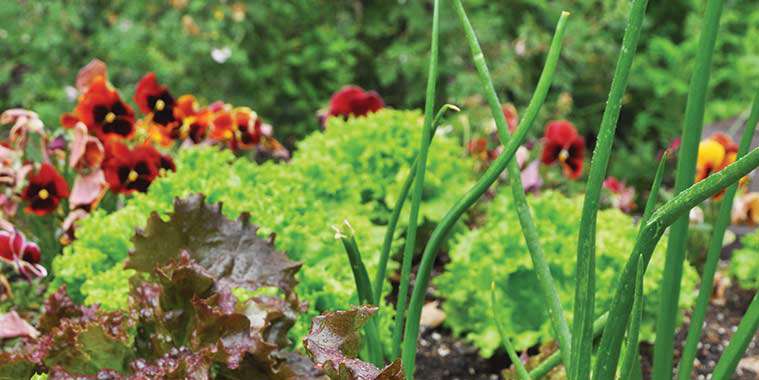Plants may not be sentient but they are smart just the same. They have evolved to take advantage of their surroundings -- even of people. If we know how this works, we can use our knowledge to avoid pesticides and fertilizers and protect our own environment.
In the wild, plant strategies include manufacturing chemicals to ward off threat or attract beneficial animals; thriving off the emissions of other plants; using animals to transport seeds and promote pollination with more distant mates; acting as traps to lure animals away from harvest crops; and taking advantage of animal, including human, preferences.
Plants that produce chemicals to repel competition are called allelopathic and there are many of them, including garlic; artemisia and marigolds to name a few. These plants are often credited with warding off insects, but indiscriminate interplanting with these species is not the answer because their chemical interaction can also stunt the growth of the companions you want to promote. Juglones, the chemical produced by some plants including the black walnut is one of the more extreme examples of this. The plant produces a noxious chemical to prevent competition from other species, particularly potatoes, apples, tomatoes and blackberry.
Companion planting advice doesn’t always work for everyone, either. A lot depends on where the plants are being grown and under what conditions, so as every gardener knows, things like companion planting guidelines are simply that: guidelines.
With closer study, we learn that there are often even better techniques for insect control than companion planting. It has been recently learned that the cabbage butterfly can detect cabbage or Brussels sprouts because these plants choke out undergrowth and leave a nice sharp brown background to illuminate the green plant. Researchers have discovered that placing something green under the plants virtually eliminates the butterfly without need for pesticides.
Nor is it all about repulsion. Borage, planted near tomatoes, strawberries and fruit orchards, is said to add potassium, calcium and other nutrients to the soil while attracting honeybees. Planting horseradish with potatoes apparently encourages potato production while repelling the Colorado potato beetle.
Scientific tests have shown that indeed basil can offer some advantages to tomatoes in yields but no detectable advantage in taste – but again, this may not prove out under different circumstances, so if your tomatoes taste better when planted with basil, then keep on planting them together.
Early pioneers, taught by the Iroquois, planted corn, squash and pole beans together, calling them the “Three Sisters”. The corn provided trellis support for the beans and shade for the squash. The beans provided nitrogen fixation for the corn and squash. The squash provided shade for the roots of the other two, keeping in moisture and choking out competing weeds.
Dorothy Dobbie is the publisher of Manitoba Gardener magazine, now in its 21st year! You will soon be able to carry it with you on your mobile phone. Watch for news about out new app. 204-940-2700 or localgardener.net



